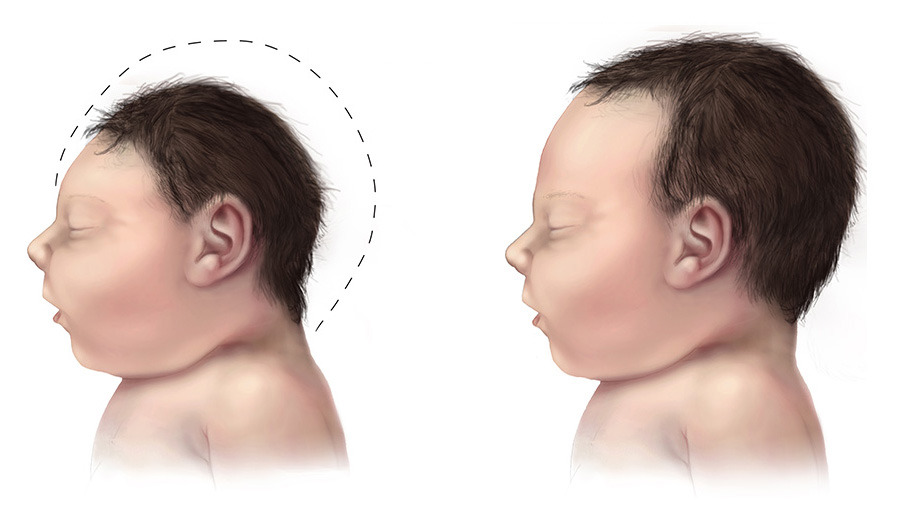|
Achalasia
Esophageal achalasia, often referred to simply as achalasia, is a failure of smooth muscle fibers to relax, which can cause the lower esophageal sphincter to remain closed. Without a modifier, "achalasia" usually refers to achalasia of the esophagus. Achalasia can happen at various points along the gastrointestinal tract; achalasia of the rectum, for instance, may occur in Hirschsprung's disease. The lower esophageal sphincter is a muscle between the esophagus and stomach that opens when food comes in. It closes to avoid stomach acids from coming back up. A fully understood cause to the disease is unknown, as are factors that increase the risk of its appearance. Suggestions of a genetically transmittable form of achalasia exist, but this is neither fully understood, nor agreed upon. Esophageal achalasia is an esophageal motility disorder involving the smooth muscle layer of the esophagus and the lower esophageal sphincter (LES). It is characterized by incomplete LES relaxati ... [...More Info...] [...Related Items...] OR: [Wikipedia] [Google] [Baidu] |
Achalasia Microcephaly
Achalasia microcephaly syndrome is a rare condition whereby achalasia in the oesophagus manifests alongside microcephaly and mental retardation. This is a rare constellation of symptoms with a predicted familial trend. The main signs of achalasia microcephaly syndrome involve the manifestation of each individual disease associated with the condition. Microcephaly can be primary, where the brain fails to develop properly during pregnancy, or secondary, where the brain is normal sized at birth but fails to grow as the child ages. Abnormalities will be observed progressively after birth whereby the child will display stunted growth and physical and cognitive development. The occipital-frontal circumference will be at or near the extreme lower end, the third percentile, indicating microcephaly. There are both genetic and behavioural causes of microcephaly. Achalasia, or Esophageal achalasia, oesophageal achalasia, is a disorder occurring in the lower oesophageal sphincter (LES). The L ... [...More Info...] [...Related Items...] OR: [Wikipedia] [Google] [Baidu] |
Heller Myotomy
Heller myotomy is a surgical procedure in which the muscles of the cardia (lower esophageal sphincter or LES) are cut, allowing food and liquids to pass to the stomach. It is used to treat achalasia, a disorder in which the lower esophageal sphincter fails to relax properly, making it difficult for food and liquids to reach the stomach. History and development It was first performed by Ernst Heller (1877–1964) in 1913. Then and until recently, this surgery was performed using an open procedure, either through the chest (thoracotomy) or through the abdomen (laparotomy). However, open procedures involve greater recovery times. Modern Heller myotomy is normally performed using minimally invasive laparoscopic techniques, which minimize risks and speeds recovery significantly. The 100th anniversary of Heller's description of the surgical treatment of patients with achalasia was celebrated in 2014. Procedure During the procedure, the patient is put under general anaesthesia. Five o ... [...More Info...] [...Related Items...] OR: [Wikipedia] [Google] [Baidu] |
Triple-A Syndrome
Triple-A syndrome or AAA syndrome is a rare autosomal recessive congenital disorder. In most cases, there is no family history of AAA syndrome. The syndrome was first identified by Jeremy Allgrove and colleagues in 1978, since then just over 100 cases have been reported. The syndrome, is called triple aaa due to the manifestation of the illness which include achalasia (a dysfunction of the esophagus), addisonianism (adrenal insufficiency of primary type), and alacrima (insufficiency of tears). Alacrima is usually the earliest manifestation. Neurodegeneration or atrophy of the nerve cells and autonomic dysfunction may be seen in the disorder, therefore some have suggested the disorder be called 4A syndrome. It is a progressive disorder that can take years to develop the full-blown clinical picture. The disorder also has variability and heterogeneity in presentation. Presentation Individuals affected by AAA have adrenal insufficiency/Addison's disease due to ACTH resistance, alac ... [...More Info...] [...Related Items...] OR: [Wikipedia] [Google] [Baidu] |
Dysphagia
Dysphagia is difficulty in swallowing. Although classified under "symptoms and signs" in ICD-10, in some contexts it is classified as a disease#Terminology, condition in its own right. It may be a sensation that suggests difficulty in the passage of solids or liquids from the mouth to the stomach, a lack of Pharynx, pharyngeal sensation or various other inadequacies of the swallowing mechanism. Dysphagia is distinguished from other symptoms including odynophagia, which is defined as painful swallowing, and Globus Pharyngis, globus, which is the sensation of a lump in the throat. A person can have dysphagia without odynophagia (dysfunction without pain), odynophagia without dysphagia (pain without dysfunction) or both together. A psychogenic disease, psychogenic dysphagia is known as phagophobia. Classification Dysphagia is classified into the following major types: # Oropharyngeal dysphagia # Esophageal dysphagia, Esophageal and obstructive dysphagia # Neuromuscular symptom comp ... [...More Info...] [...Related Items...] OR: [Wikipedia] [Google] [Baidu] |
Botulinum Toxin
Botulinum toxin, or botulinum neurotoxin (BoNT), is a neurotoxic protein produced by the bacterium ''Clostridium botulinum'' and related species. It prevents the release of the neurotransmitter acetylcholine from axon endings at the neuromuscular junction, thus causing flaccid paralysis. The toxin causes the disease botulism. The toxin is also used commercially for medical and cosmetic purposes. The seven main types of botulinum toxin are named types A to G (A, B, C1, C2, D, E, F and G). New types are occasionally found. Types A and B are capable of causing disease in humans, and are also used commercially and medically. Types C–G are less common; types E and F can cause disease in humans, while the other types cause disease in other animals. Botulinum toxins are among the most potent toxins known. Intoxication can occur naturally as a result of either wound or intestinal infection or by ingesting formed toxin in food. The estimated human lethal dose of type A toxin is 1.3 ... [...More Info...] [...Related Items...] OR: [Wikipedia] [Google] [Baidu] |


.jpg)